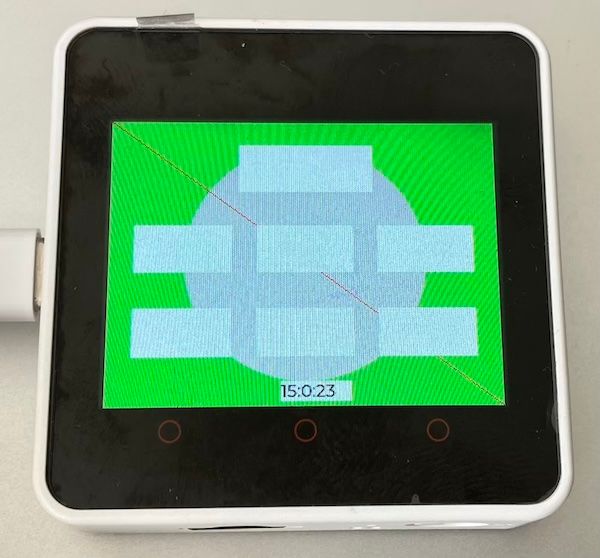Here we go, easy work-around for the faulty lcd.image():
from m5stack import *
buffer = open("/sd/images/test.jpg").read()
lcd.image_buff(lcd.CENTER, lcd.CENTER, buffer)
Here we go, easy work-around for the faulty lcd.image():
from m5stack import *
buffer = open("/sd/images/test.jpg").read()
lcd.image_buff(lcd.CENTER, lcd.CENTER, buffer)
Adding upip to the firmware image would make developer's live much easier.
How to manually install the urllib.parse library.
Create folder /upip and add files upip.py and upip_utarfile.py manually.
Install the library with upip:
%cd /flash/upip
import upip
upip.install("micropython-urllib.parse", "/flash/lib")
To get it working, remove re.py and ffilib.py from lib. Hat-tip to Andreas.
Finally you can encode URL parameters for GET requests:
%cd /flash/lib
import urllib.parse
urllib.parse.urlencode({"a":1, "b": 2})
=> 'a=1&b=2'
In the forum I read that there is some advanced touch/swipe functionality available for the Arduino language.
Will there be high level touch/swipe functions for UIFlow?
I would like to do some photo swiping/scrolling on my Core2, like on a smart phone.
Cheers
Mike
The block "get timezone (return string)" is also not working, showing traceback.
When getting the time in UIFlow2, date tuple has the year 2054 and the minutes are 17 off, so it's seems not to be a timezone issue.
I tried multiple NTP servers when flashing, like the pre-configured ntp.aliyun.com and also de.pool.ntp.org. The device is connected to Internet, I can run my program via UIFlow2 cloud, but the time is not synchronized correctly.
It would be great to be able to manually trigger the NTP sync of time.
"Set timezone" block does not work, neither with the dropdown nor with the string, in v2.1.8 on Core2.
Both blocks are converted into the same python code:
import time
time.timezone('GMT+1')
Traceback:
AttributeError: 'module' object has no attribute 'timezone'
@ajb2k3 Using M5Burner v3.0.0 on MacOS v14.7 on MacBook M3.
Using a Core2 with fresh v2.1.8-CORE2 image flashed and UIFlow2 V2.1.8 in web, connected via cloud.
Every time I run a brand new project file (just Setup and Loop), this is shortly shown on device, before the program runs:
Traceback (most recent call last):
File "<stdin>", line 27, in <modules>
Keyboardinterrupt:
Every time I flash an image with M5Burner, I have to change again COM, BaudRate, SNTP0, SNTP1 and Timezone.
It would be great if M5Burner could save all the config items for next time re-use.
It seems WIFI SSID and WIFI Password are already saved.
It would be great to have a dedicated sub-category for the M5Burner software.
I would like to create a clock face on the Core2 screen, with hour, minute and second hands. It seems this is currently not possible?
When I want to draw 60 second dots, I would rather use a math function and draw them programatically, than create 60 UI elements.
Especially when using multiple screens, I don't want everything overlayed in the UI editor .
I create a GUI with Labels and Touch Buttons, then I want to clear the screen and draw a clock. But even though I hide the elements and delete them, they are still shown as white outline.


How to fully hide GUI designer elements to have a blank screen to draw onto?
@kuriko Wow, this is cool! Core2 UIFlow v1 is in WiFi mode, but with "Terminal (Beta)" I can connect over the USB serial console. The play button will upload and run the current script, even with timers.
Would be very cool if the whole UIFlow web IDE had a setting to just connect via cable. Or if the Terminal play button could be placed somewhere in the IDE, without having the terminal window open all the time.
Side note: The regular UIFlow web IDE play button now shows a green success message "Execute code successfully" when clicked, but the code is actually not running on the device. Either it's not uploaded or not restarted.